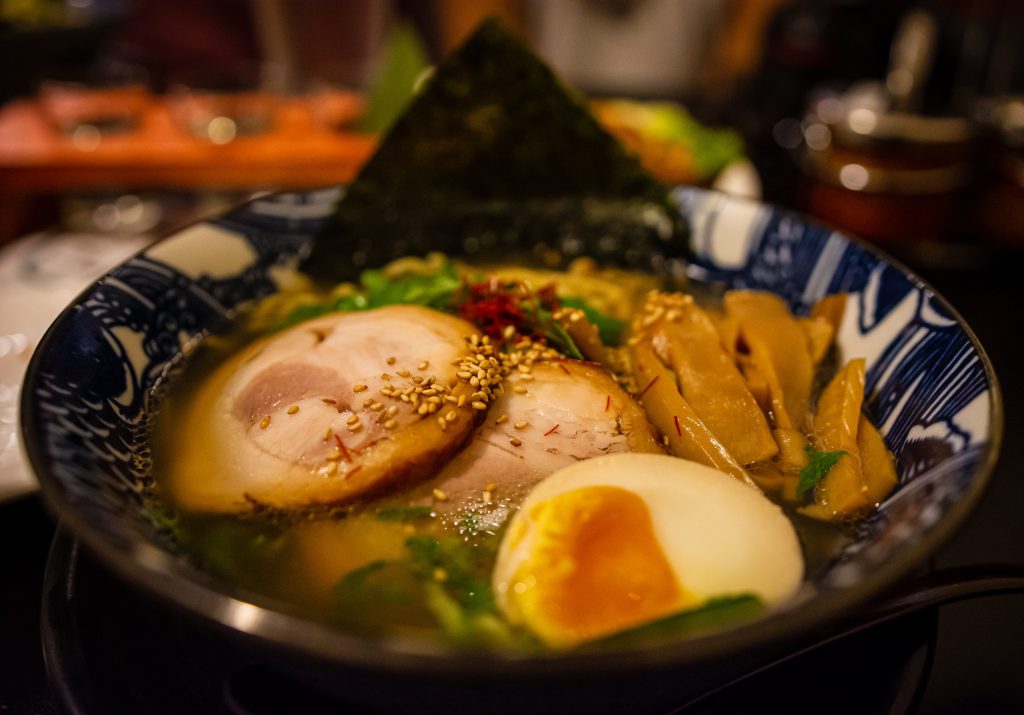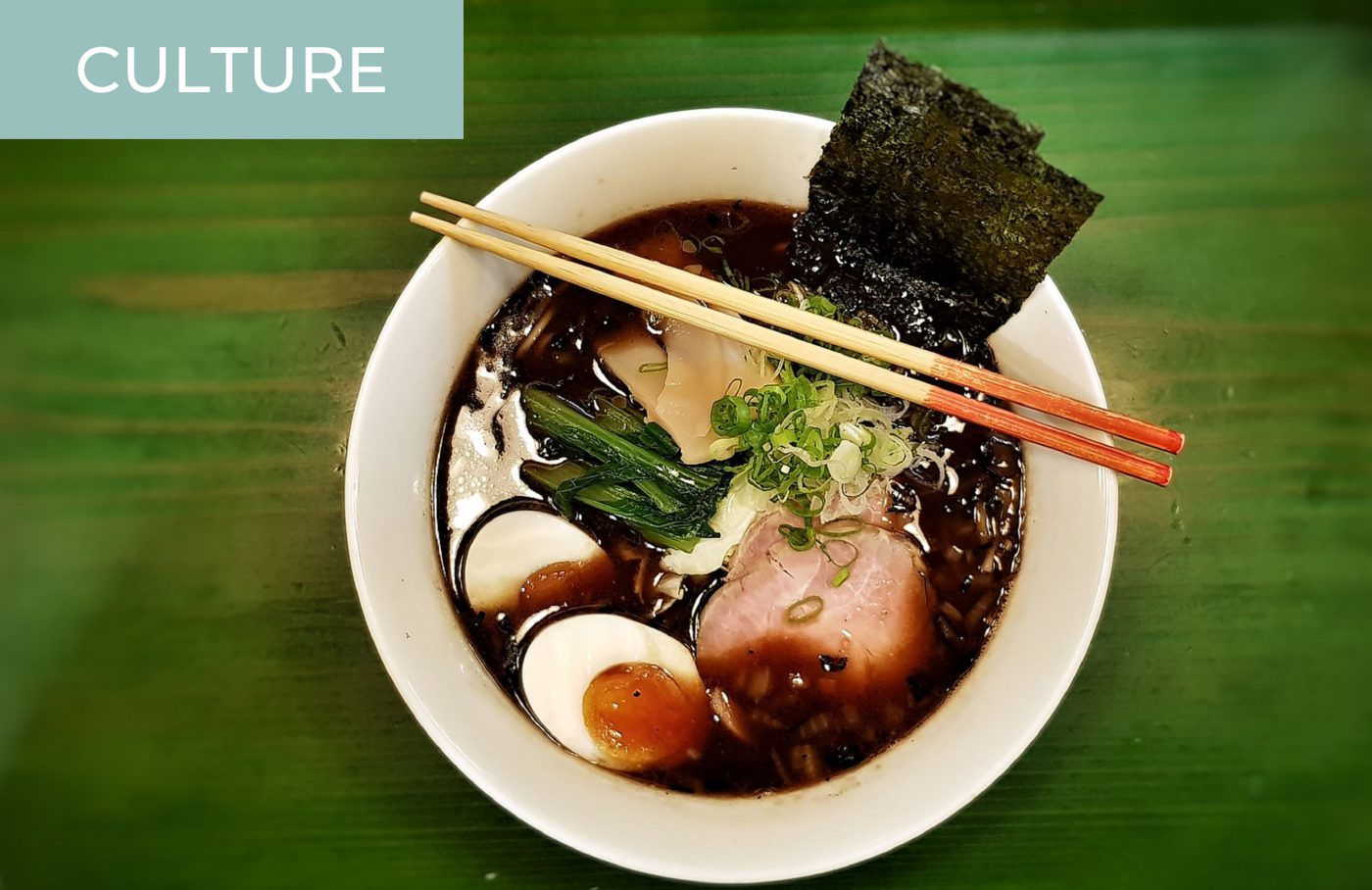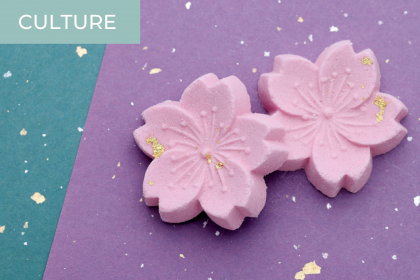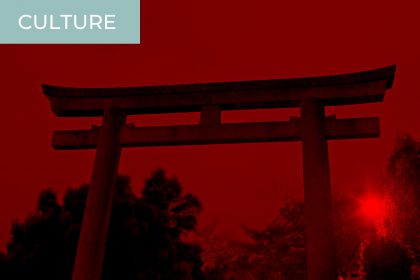If you are traveling alone and feeling hungry, ramen is probably the best choice for a satisfying meal. It is arguably one of the most famous Japanese dishes. Whether it is your first time to try ramen, or whether you are a ramen veteran, you should definitely add one (or more) ramen meals to your itinerary. Here are 10 things you should know before you start slurping down those noodles!
- It is said that ramen was brought from China around 150 years ago during the Meiji era (1868–1912). However, the dish only became well established about 100 years ago, at the start of the Showa era. Originally, ramen used to be called “chuka soba,” meaning “Chinese soba.” The name “ramen” only came into use during the 1950s.
- Wheat noodles form the main ingredient. They are served in a hot tasty broth with some additional ingredients. There are four basic flavorings of the broth: soy sauce (shoyu), miso, salt (shio), and pork bone (tonkotsu). The best ramen restaurants will only specialize in one or two of these.
- Popular ramen shops may have a line out in front but since it is a dish that can be made and eaten relatively fast, the line moves quickly and you will soon be seated. Similarly, you should avoid taking too much time while eating, and leave soon after you are done. If you come in a group, be prepared to sit separately.
- Most of the time, you will need to purchase your meal in advance from a ticket machine. Popular choices are sometimes highlighted but you can ask for a recommendation by saying, “Osusume wa nan desu ka?” Most dishes come with braised pork (chashu), chopped onions (negi), and seasoned bamboo shoots (menma). A popular additional ingredient is a marinated soft-boiled egg (hanjuku ajitsuke tamago).
- Some places will ask you additional questions about your order, for example, how firm you like the noodles, or how oily you like the soup. Unless you have specific preferences, you can answer these questions by saying “futsu” (meaning usual).

- If you are worried about getting stains on your clothes, sometimes aprons are available. If you do not see any, try asking for one by saying, “Epuron, arimasu ka?” If you are worried about your hair getting in the way, some places may also have hair elastics (hea gomu).
- First, use the provided spoon to taste the soup—this is the most important aspect of a ramen dish and will help you towards the appreciation of the whole dish. Next, try some noodles. It is acceptable to slurp to cool them off and avoid burning your palate. Ramen must be eaten hot, and quickly, so that the noodles do not get soggy.
- There are a number of condiments, like pepper and shichimi togarashi (Japanese 7 spice blend), and also extra toppings such as bean sprouts (moyashi) and garlic (ninniku) on the counter, so feel free to use them if you want to jazz up the taste of your food.
- It is not necessary to finish all the soup but you should eat all the noodles and toppings. Some places will let you order extra noodles for a small fee if you are still hungry. To get a refill, ask for a “kaedama.” You can also get some more soup (usually free) by saying, “Supu wari onegaishimasu.”
- When you are finished, place your empty bowl on the counter and say, “Gochiso sama deshita,” before leaving. This means, “Thank you for the delicious meal!”





One Comment
Alice Carroll
May 16, 2022 at 5:14 PMIt’s interesting to know that some Japanese restaurants can also offer elastics to tie up one’s hair before eating ramen. I’m interested in looking for a ramen place near where I live because I want to be able to try it out someday. I’ve always been fascinated by it whenever I see such dishes on shows or documentaries that I catch on TV.